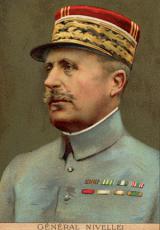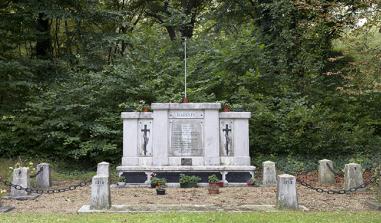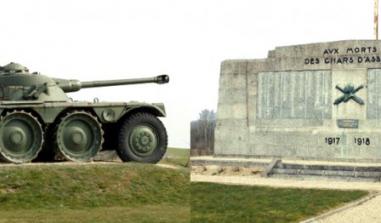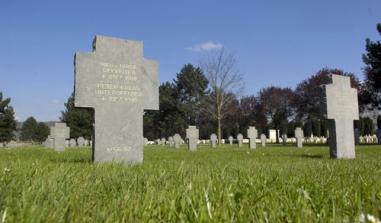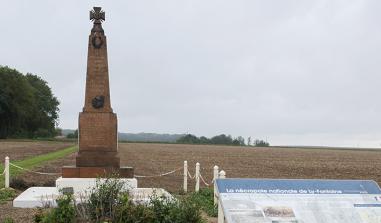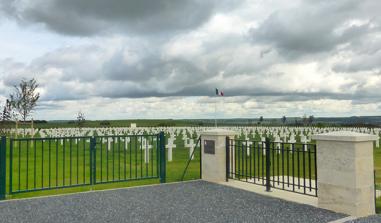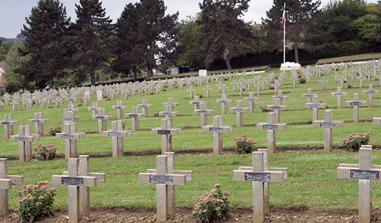Crouy National Cemetery
Crouy National Cemetery. © Guillaume Pichard
Click here to view the cemetery's information panel 
Lying on the main Chauny to Soissons road, Crouy National Cemetery holds the remains of French soldiers killed in the battles of Chemin des Dames between 1914 and 1918. Established in 1917, at the time of the April offensive, the cemetery was reorganised between 1920 and 1924 to accommodate the bodies of other soldiers buried in the temporary cemeteries of Bucy-le-Long and Missy-sur-Aisne. The cemetery contains nearly 3 000 bodies: 2 941 French (1 476 in two ossuaries) and 50 British soldiers killed for the most part in September-October 1914. Also buried here are one French and two Polish soldiers killed in the Second World War.
The fighting at Crouy, 1914-15
From the very first weeks of the conflict until the end of the war in 1918, the limestone plateau of Chemin des Dames, which dominates the Aisne valley to the south and the Ailette valley to the north, was bitterly disputed. This natural observation point was a strategic position dominating both the Reims and Soissons plains. On 12 September 1914, pursuing the enemy after its defeat on the Marne, the Allies crossed the Aisne. By mid-October, General Maunoury’s 6th Army held the Soissons sector. On 30 October, the Germans occupied Vailly-sur-Aisne, which lay at the heart of the fighting. By November, the plateau was in the hands of the enemy, who progressively transformed it into a veritable fortress.
To relieve enemy pressure on Soissons and secure a position on the road to Laon, on 25 December 1914, amid the floodwater of the Aisne, the French attacked in the Crouy sector. On 1 January 1915, they bombarded the enemy positions. On the 8th, after a series of mine blasts, the attack was launched. Despite taking the first enemy lines on the plateau, the men of General Berthelot’s 55th Division were unable to capitalise on their success, because of the speed of their adversary’s reaction. On 12 January came a violent counter-attack, which drove the French back across to the south bank of the Aisne. Fierce fighting ensued on the slopes of Hill 132. Mine engineer Albert Tastu, an officer of the 289th Infantry Regiment, lost his life in the fighting. Surrounded with his men in the Grotte des Zouaves, Tastu resisted valiantly, but was killed by enemy fire. Paris seemed under threat once again. On 13 January, the French retreated further south and the front became entrenched on the outskirts of Soissons. Exhausted and poorly supplied due to the flooding of the Aisne, the French suffered major losses. In just six days, 12 000 men, including 1 800 of the 60th Infantry Regiment alone, were put hors de combat. This defeat shook public opinion and became known as “the Crouy affair”, as described by soldier and writer Henry Barbusse in his book Le Feu (English title: Under Fire), which won the 1916 Prix Goncourt. Barbusse had enlisted as a volunteer with the 231st Infantry Regiment and took part in the episode. The press was censored and a number of generals, including Berthelot, were punished.
The Chemin des Dames offensive, April 1917
Despite the German retreat to the Hindenburg Line in March 1917, General Nivelle maintained his attack on the Chemin des Dames in April. To carry the offensive, he deployed 49 Infantry Divisions and five Colonial Infantry Divisions, supported by 5 310 guns and, for the first time, 128 tanks. Altogether, more than a million men took part in the operation.
On 2 April, the artillery pounded the German positions, partly destroying them. Thus, on the morning of 16 April, the first waves came up against barbed wire and were mown down by machine-gun fire. The French nevertheless managed to get a foothold on the ridge. Despite the losses and difficult weather conditions, the attacks continued the next day. Nivelle’s authority crumbled. From 16 to 30 April, 147 000 men were put hors de combat, 40 000 of them dead. Each division lost on average 2 600 men on the Chemin des Dames.
On the verge of collapse, the French held on. During the summer of 1917, a series of operations and counter-attacks were launched for control over the Chemin des Dames’ key positions, from Craonne to Laffaux.
The infantrymen on both sides bore the most extreme hardships. In October 1917, the Battle of Malmaison took place, whose objective was to capture the old fort of La Malmaison, to the west of the Chemin des Dames. Having taken the plateau on 23 October, the Germans retreated to the north of the Ailette valley.
In October 1920, the ruins of Crouy, which had been the scene of bitter fighting in 1915 and suffered the hardships of occupation, received an army citation.
Crouy National Cemetery. © Guillaume Pichard
Crouy National Cemetery. © Guillaume Pichard
Crouy National Cemetery. © Guillaume Pichard
Crouy National Cemetery. © Guillaume Pichard
Crouy National Cemetery. © Guillaume Pichard
Crouy National Cemetery. © Guillaume Pichard
Crouy National Cemetery. © Guillaume Pichard
Crouy National Cemetery. © Guillaume Pichard
Crouy National Cemetery. © Guillaume Pichard
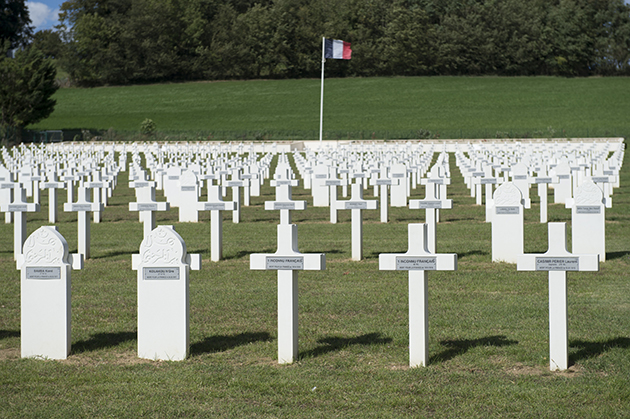
Crouy National Cemetery. © ECPAD
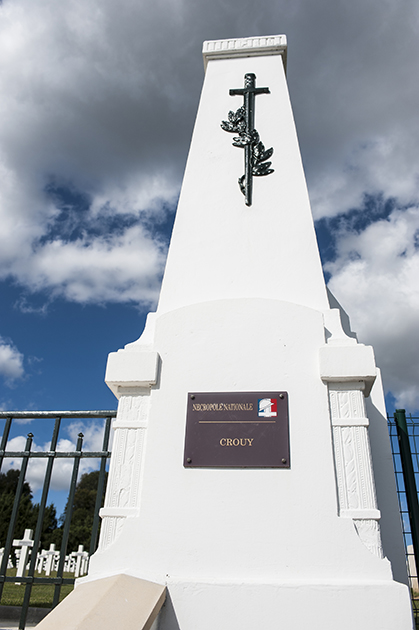
Crouy National Cemetery. © ECPAD
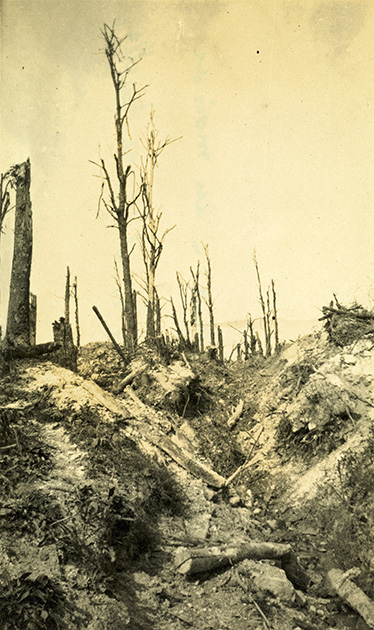
Boyau de la Bove, 8 mai 1917. © ECPAD
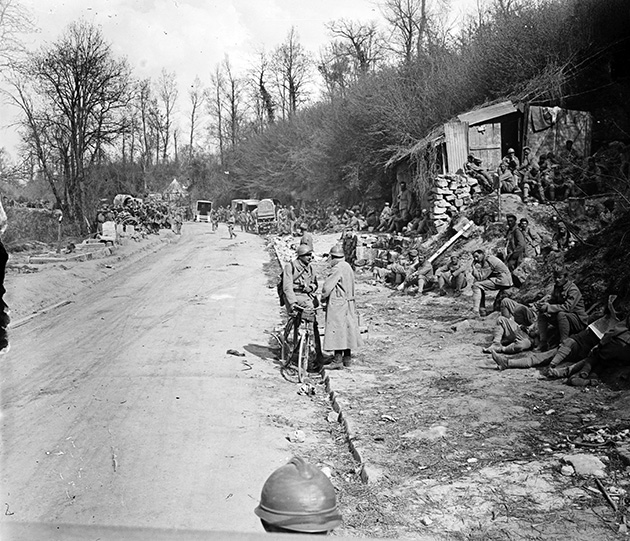
Troupes françaises au repos à Crouy, 5 mai 1917. Un cycliste du 22e RI discute avec un autre soldat du régiment qui vient de participer à l'offensive du Chemin des Dames. © ECPAD
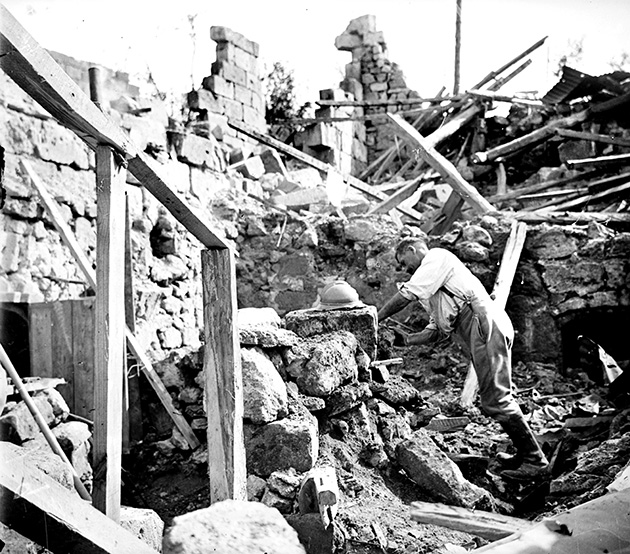
Soldat français dans les ruines de Crouy, mai 1917. © ECPAD
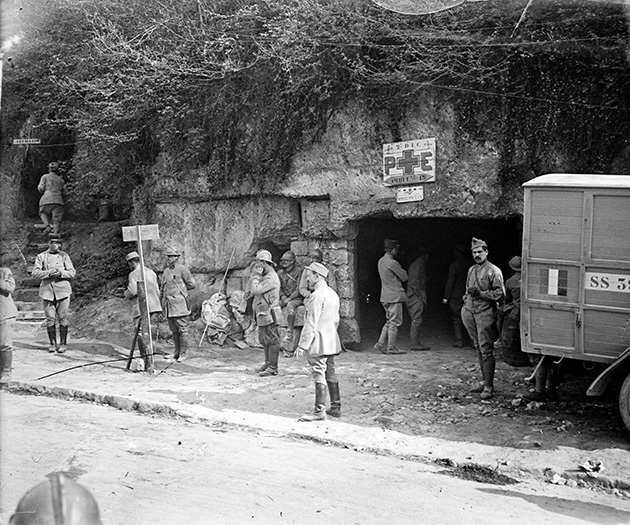
Crouy, poste d'ambulance d'évacuation, janvier 1918. Installée dans une creute, en mai 1917, cette unité médicale comprend un hôpital et un centre de soin. © ECPAD
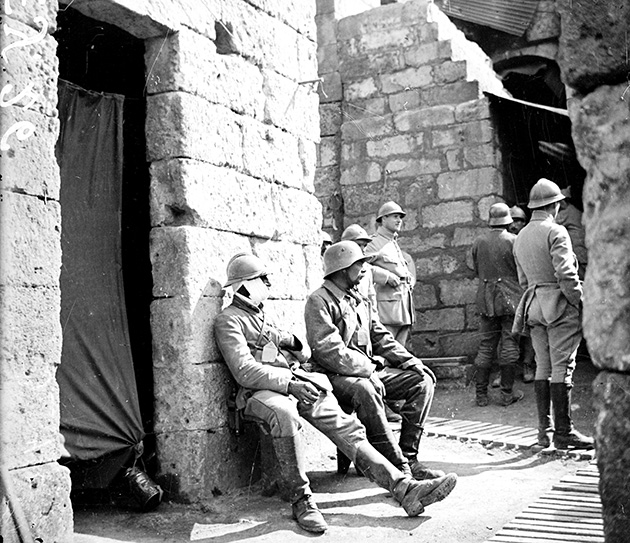
Soldats français et prisonniers allemands blessés attendent devant le poste de secours de Crouy. © ECPAD/Gaston Thomas
Practical information
Crouy
3 miles northeast of Soissons, Rue Maurice Dupuis, Crouy
Weekly opening hours Unguided visits throughout the year
Read more
Read more
Aisne Departmental Tourist Board
26, avenue Charles de Gaulle
02007 Laon Cedex
Tel: +33 (0)3 23 27 76 76


